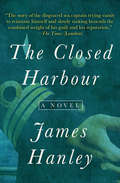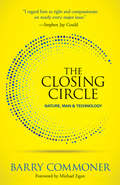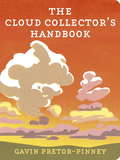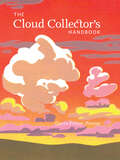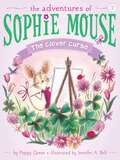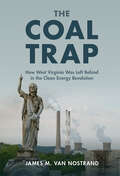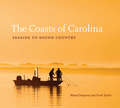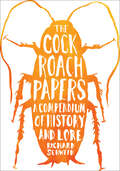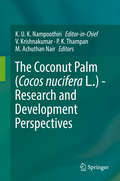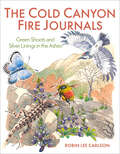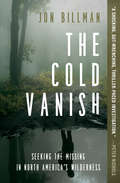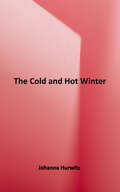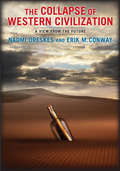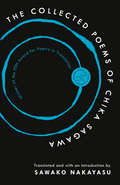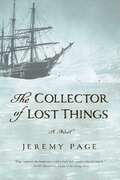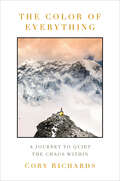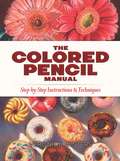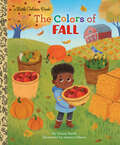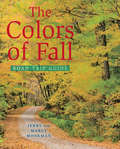- Table View
- List View
The Climb: Tragic Ambitions on Everest
by Anatoli Boukreev G. Weston DeWaltEverest, the major motion picture from Universal Pictures, is set for wide release on September 18, 2015. Read The Climb, Anatoli Boukreev (portrayed by Ingvar Sigurðsson in the film) and G. Weston DeWalt’s compelling account of those fateful events on Everest.In May 1996 three expeditions attempted to climb Mount Everest on the Southeast Ridge route pioneered by Sir Edmund Hillary and Tenzing Norgay in 1953. Crowded conditions slowed their progress. Late in the day twenty-three men and women-including expedition leaders Scott Fischer and Rob Hall-were caught in a ferocious blizzard. Disoriented and out of oxygen, climbers struggled to find their way down the mountain as darkness approached. Alone and climbing blind, Anatoli Boukreev brought climbers back from the edge of certain death. This new edition includes a transcript of the Mountain Madness expedition debriefing recorded five days after the tragedy, as well as G. Weston DeWalt's response to Into Thin Air author Jon Krakauer.
The Closed Harbour: A Novel
by James HanleyTrapped on shore, a captain fights desperately for a place on a ship Once, Marius believes, the world was wide and the sea was infinite. Adventure and profit awaited any man bold enough to step aboard a ship and cast his lot with the open ocean. But those days are gone. After a long and undistinguished career, Marius&’s reputation suffers an irreparable blow during the dark days of World War II when he refuses to go down with a sinking ship. It is the greatest crime a captain can commit, and it dooms him to hell on earth. Trapped in Marseilles, Marius spends his days begging for a boat and his nights in a bitter, alcoholic stupor. The ocean has rejected him so fully, he thinks, that he doubts the waters would even allow him to drown. But as Marius learns, it&’s possible for a man to drown on dry land.
The Closing Circle: Nature, Man, and Technology
by Barry Commoner"I regard him as right and compassionate on nearly every major issue." — Stephen Jay GouldA radical argument about the root causes of climate change, The Closing Circle was progressive when it was written in 1971 and its message remains increasingly relevant today. Barry Commoner, the father of modern ecology, claims that production for profit creates dangerous ecological ramifications and offers a concise analysis of the nature, causes, and possible solutions to impending ecological disaster. His analysis is a must-read for those attempting to understand how the global economy impacts our environment and contributes to climate change and for those seeking the steps to be taken in saving our planet."Readers interested in the history of environmental thought will be fascinated to see how many of today's crises were already understood almost fifty years ago. We've made progress in a few places, but it's hard to read Commoner's prescient warnings without a sigh for how little attention we've actually paid to these great challenges." — Bill McKibben, author of Falter and The End of Nature
The Cloud Book: How to Understand the Skies
by Richard Hamblyn Met OfficeBecome an expert on clouds and skies with this definitive guide to cloudspotting, produced in association with the Met Office. Clouds have been the object of fascination throughout history, providing food for thought for scientists and daydreamers alike. In this comprehensive guide to the skies, Dr. Richard Hamblyn introduces you to all the different cloud species, including twelve newly recognized cloud forms. Produced in association with the Met Office—the world&’s premier weather forecasting bureau—all things to do with the origin and development of a cloud are here. Whether you are looking at a giant fluffy cloud or a tiny fleeting wisp, your cloudspotting will be expertly informed and much more satisfying with this guide. Not only will you be able to identify individual clouds as they appear, but also to track their likely changes over time, and thus predict weather patterns. Illustrated with stunning images from around the globe, this book will unlock the mysteries of the skies so that you can enjoy cloudspotting and skygazing every day.
The Cloud Collector's Handbook
by Gavin Pretor-PinneyTHE CLOUD COLLECTOR'S HANDBOOK fits into the pocket, allowing cloudspotters to identify cloud formations anytime and anywhere. All the common cloud types are represented, as are many of the rare ones, each fully described and illustrated with a range of photographs. <P><P>Not only is THE CLOUD COLLECTOR'S HANDBOOK an invaluable resource for anyone who wants to be able to identify and understand every cloud that floats by, it also caters for the competitive cloudspotter. Points are awarded for each cloud type identified - the rarer the cloud, the greater points - and there's space to fill in where and when it was sighted. Beautifully designed, in colour throughout, and full of the humour that made THE CLOUDSPOTTER'S GUIDE so engaging, the HANDBOOK is the essential reference for anyone with their head in the clouds.
The Cloud Collector's Handbook
by Gavin Pretor-PinneyKeep your head in the clouds with this whimsical guide to the wonders of the sky from an award-winning science writer.In The Cloud Collector’s Handbook, cloud expert Gavin Pretor-Pinney catalogs a variety of clouds and gives readers points for spotting them and recording their finds. This fun and fact-filled book features gorgeous full-color photographs that showcase various types of clouds, from fluffy cumulus to the super rare horseshoe vortex to the wispy noctilucent clouds that hang at the fringes of space.Sure to be a hit with both aspiring and seasoned cloud gazers, this clever handbook comes from the bestselling author, BBC presenter, and founder of the Cloud Appreciation Society.
The Clover Curse (The Adventures of Sophie Mouse #7)
by Poppy GreenSophie finds a four-leaf clover that isn’t exactly lucky in the seventh book of The Adventures of Sophie Mouse!Sophie Mouse is painting in Clio’s Clover patch on a beautiful spring day when she spots something unusual. It’s a clover…but it has four leaves! Four-leaf clovers are supposed to bring good luck, right? Sophie waits and waits for this good luck, but it seems like just the opposite is happening. She spills paint all over herself, she doesn’t have any fun daydreams, and she forgets about an adventure she was supposed to go on with Hattie! Will Sophie ever be able to break this Clover Curse? With easy-to-read language and illustrations on almost every page, the Adventures of Sophie Mouse chapter books are perfect for beginning readers.
The Coal Trap: How West Virginia Was Left Behind in the Clean Energy Revolution
by James M. Van NostrandBetween 2009 and 2019, West Virginian politicians aligned themselves with the interests of the coal industry to the substantial detriment of the citizens and economy of the state. Despite the undeniable low-carbon transformation that was occurring in the energy industry in the US during this period, state political leaders doubled down on coal. Rather than provide the leadership necessary to manage the transition of the state's economic drivers away from fossil fuels, they largely blamed the demise of the coal industry on the federal government. At every turn, the interests of the coal industry were placed above the economic and environmental health of West Virginians. James Van Nostrand tells the story of why West Virginia now faces overwhelming obstacles to competing in the economic marketplace of the twenty-first century. The book serves as a warning of how a fair energy transition can be derailed by political failure.
The Coasts of Carolina
by Bland Simpson Scott TaylorThe Coasts of Carolinacaptures the vibrancy of the North Carolina oceanfront, sound country, and interior shores behind the barrier islands. Scott Taylor, who has been photographing the coast for almost thirty years, and Bland Simpson, whose many coastal books have delighted readers for two decades, come together to offer an inviting visual and textual portrait organized around coastal themes such as nature, fishing, and community life, with an emphasis on particular places and seasons. Evocative text is woven together with 145 vivid color images to present a unique and welcoming vision of the coastal region. As natives of the area, the collaborators venture beyond the familiar to show us swamp, marsh, river, sound, and seashore, uncovering places of uncommon delight that most visitors rarely lay eyes on. Their work celebrates the beauty of this amazing region and embodies their distinctive sense of what makes the North Carolina coast so special.
The Cockroach Papers: A Compendium of History and Lore
by Richard SchweidSkittering figures of urban legend—and a ubiquitous reality—cockroaches are nearly as abhorred as they are ancient. Even as our efforts to exterminate them have developed into ever more complex forms of chemical warfare, roaches’ basic design of six legs, two hypersensitive antennae, and one set of voracious mandibles has persisted unchanged for millions of years. But as Richard Schweid shows in The Cockroach Papers, while some species of these evolutionary superstars do indeed plague our kitchens and restaurants, exacerbate our asthma, and carry disease, our belief in their total villainy is ultimately misplaced. Traveling from New York City to Louisiana, Mexico, Nicaragua, and Morocco, Schweid blends stories of his own squirm-inducing roach encounters with meticulous research to spin a tale both humorous and harrowing. As he investigates roaches’ more nefarious interactions with our species—particularly with those of us living at the margins of society—Schweid also explores their astonishing diversity, how they mate, what they’ll eat, and what we’ve written about them (from Kafka and Nelson Algren to archy and mehitabel). Knowledge soon turns into respect, and Schweid looks beyond his own fears to arrive at an uncomfortable truth: We humans are no more peaceful, tidy, or responsible about taking care of the Earth or each other than these tiny creatures that swarm in the dark corners of our minds, homes, and cereal boxes.
The Coconut Palm (Cocos nucifera L.) - Research and Development Perspectives
by K. U. Nampoothiri V. Krishnakumar P. K. Thampan M. Achuthan NairSince the publication of "The coconut palm - A monograph" in 1960, considerable information has been accrued on the crop through work at research institutes, international organisations and development agencies. Although coconut cultivation is spread over 93 countries, providing employment and creating livelihood opportunities to 64 million families around the globe, smallholder coconut farmers are now facing numerous challenges. The wide gap between the potential and actual yield is a major concern, and as such it is necessary to disseminate knowledge in order to implement research findings. Coconut research in India, one of the leading coconut producing countries, is celebrating its centenary, making this an opportune time to review the research and development advances and the relevant technologies. This detailed, comprehensive book covers all aspects of coconut, from the origins to cultivation, breeding, physiology and value addition, as well as subjects of topical interest like nutrition and health, biotechnology, and climate change and carbon sequestration. Written by leading experts in the fields it emphasises that the livelihood of the small coconut landholders is the ultimate aim of scientists and developmental agencies, and outlines various important strategies to make coconut farming more remunerative globally. It discusses work in all the major coconut growing countries and outlines suggestions for international cooperation.Research work on the crop is comparatively difficult because of its perennial nature, longevity, height, long juvenile phase, large sized nuts, cross pollination and seed propagation. As these special features necessitate greater investment of resources, time and land, it is all the more imperative that research is not duplicated and the information and experience becoming available around the world is shared so that it can be fully utilised. In this context periodic publications, compiling all the available information on coconut assume greater significance. This book is therefore of great value to researchers, students, extension workers, developmental agencies and progressive farmers.
The Cold Canyon Fire Journals: Green Shoots and Silver Linings in the Ashes
by Robin Lee CarlsonBraiding together illustration, observation, and reportage, artist and naturalist Robin Lee Carlson offers a watershed work that will forever change how we live with wildfire in the WestWhen the nature reserve at Cold Canyon went up in flames—a casualty of California’s raging fire seasons—Robin Lee Carlson embarked on a five-year journey to learn the legacy of the burn. Spurred by scientific curiosity, Carlson’s deep digs into the natural history of this fire-swept ecosystem unearth mind-bending revelations about nature’s wild wisdom. Her transformative story of fire as a force for renewal underscores what scientists are urgently working to understand: that in California’s wildfire ecologies, fire functions as an elemental power that does not destroy the diverse habitats of California, but regenerates them. Richly illustrated in pen, ink, and watercolor, this snapshot of Cold Canyon’s wildlife emerging from the ashes introduces the reader to the wonder of ecological kinship and its cycles in our wild lands. Carlson’s artistic and scientific journey ultimately leads her (and us) to a new understanding of how we must live in relationship to fire and to the land. With fire suppression and climate change undermining the essential regenerative work of fire in our ecosystem, Carlson’s story is an urgent one—one that shows us how cultivating intimacy with our natural world teaches us what we need to do to sustain it.
The Cold Vanish: Seeking the Missing in North America's Wildlands
by Jon BillmanFor readers of Jon Krakauer and Douglas Preston, the critically acclaimed author and journalist Jon Billman's fascinating, in-depth look at people who vanish in the wilderness without a trace and those eccentric, determined characters who try to find them.These are the stories that defy conventional logic. The proverbial vanished without a trace incidences, which happen a lot more (and a lot closer to your backyard) than almost anyone thinks. These are the missing whose situations are the hardest on loved ones left behind. The cases that are an embarrassment for park superintendents, rangers and law enforcement charged with Search & Rescue. The ones that baffle the volunteers who comb the mountains, woods and badlands. The stories that should give you pause every time you venture outdoors.Through Jacob Gray's disappearance in Olympic National Park, and his father Randy Gray who left his life to search for him, we will learn about what happens when someone goes missing. Braided around the core will be the stories of the characters who fill the vacuum created by a vanished human being. We'll meet eccentric bloodhound-handler Duff and R.C., his flagship purebred, who began trailing with the family dog after his brother vanished in the San Gabriel Mountains. And there's Michael Neiger North America's foremost backcountry Search & Rescue expert and self-described "bushman" obsessed with missing persons. And top researcher of persons missing on public wildlands Ex-San Jose, California detective David Paulides who is also one of the world's foremost Bigfoot researchers. It's a tricky thing to write about missing persons because the story is the absence of someone. A void. The person at the heart of the story is thinner than a smoke ring, invisible as someone else's memory. The bones you dig up are most often metaphorical. While much of the book will embrace memory and faulty memory -- history -- The Cold Vanish is at its core a story of now and tomorrow. Someone will vanish in the wild tomorrow. These are the people who will go looking.
The Cold and Hot Winter (The hot & Cold Series)
by Johanna HurwitzFifth grader Derek and his best friend Rory are delighted when their neighbor's niece Bolivia comes to town for another visit, until a lot of missing objects make Derek begin to doubt Rory's honesty.
The Collapse of Western Civilization
by Naomi Oreskes Erik M. ConwayThe year is 2393, and a senior scholar of the Second People's Republic of China presents a gripping and deeply disturbing account of how the children of the Enlightenment, the political and economic elites of the so-called advanced industrial societies, entered into a Penumbral period in the early decades of the twenty-first century, a time when sound science and rational discourse about global change were prohibited and clear warnings of climate catastrophe were ignored. <P><P>What ensues when soaring temperatures, rising sea levels, drought, and mass migrations disrupt the global governmental and economic regimes? <P><P>The Great Collapse of 2093.This work is an important title that will change how readers look at the world. Dramatizing climate change in ways traditional nonfiction cannot, this inventive, at times humorous work reasserts the importance of scientists and the work they do and reveals the self-serving interests of the so called "carbon industrial complex" that have turned the practice of sound science into political fodder. <P><P>The authors conclude with a critique of the philosophical frameworks, most notably neo-liberalism, that do their part to hasten civilization's demise. <P><P>Based on sound scholarship yet unafraid to tilt at sacred cows in both science and policy, this book provides a welcome moment of clarity amid the cacophony of climate change literature. It includes a lexicon of historical and scientific terms that enriches the narrative and an interview with the authors.
The Collapse of Western Civilization: A View from the Future
by Naomi Oreskes Erik ConwayThe year is 2393, and the world is almost unrecognizable. Clear warnings of climate catastrophe went ignored for decades, leading to soaring temperatures, rising sea levels, widespread drought and—finally—the disaster now known as the Great Collapse of 2093, when the disintegration of the West Antarctica Ice Sheet led to mass migration and a complete reshuffling of the global order. Writing from the Second People's Republic of China on the 300th anniversary of the Great Collapse, a senior scholar presents a gripping and deeply disturbing account of how the children of the Enlightenment—the political and economic elites of the so-called advanced industrial societies—failed to act, and so brought about the collapse of Western civilization. In this haunting, provocative work of science-based fiction, Naomi Oreskes and Eric M. Conway imagine a world devastated by climate change. Dramatizing the science in ways traditional nonfiction cannot, the book reasserts the importance of scientists and the work they do and reveals the self-serving interests of the so called "carbon combustion complex" that have turned the practice of science into political fodder. Based on sound scholarship and yet unafraid to speak boldly, this book provides a welcome moment of clarity amid the cacophony of climate change literature.
The Collapse of the Eastern Mediterranean
by Ronnie EllenblumAs a 'Medieval Warm Period' prevailed in Western Europe during the tenth and eleventh centuries, the eastern Mediterranean region, from the Nile to the Oxus, was suffering from a series of climatic disasters which led to the decline of some of the most important civilisations and cultural centres of the time. This provocative study argues that many well-documented but apparently disparate events – such as recurrent drought and famine in Egypt, mass migrations in the steppes of central Asia, and the decline in population in urban centres such as Baghdad and Constantinople – are connected and should be understood within the broad context of climate change. Drawing on a wealth of textual and archaeological evidence, Ronnie Ellenblum explores the impact of climatic and ecological change across the eastern Mediterranean in this period, to offer a new perspective on why this was a turning point in the history of the Islamic world.
The Collected Poems of Chika Sagawa (Modern Library Torchbearers)
by Chika SagawaWinner of the PEN Award for Poetry in Translation • The electrifying collected works of &“one of the most innovative and prominent avant-garde poets in early twentieth-century Japan&” (The New Yorker). Translated by and with an introduction by Sawako NakayasuAn important and daringly experimental voice in Tokyo&’s avant-garde poetry scene, Chika Sagawa broke with the gender-bound traditions of Japanese poetry. Growing up in isolated rural Japan, Sagawa moved to Tokyo at seventeen, and begin publishing her work at eighteen.She was immediately recognized as a leading light of the male-dominated Japanese literary scene; her work combines striking, unique imagery with Western influences. The results are short, sharp, surreal poems about human fragility and the beauty of nature from Japan&’s first female Modernist poet. The Modern Library Torchbearers series features women who wrote on their own terms, with boldness, creativity, and a spirit of resistance. AMERICAN INDIAN STORIES • THE AWAKENING • THE CUSTOM OF THE COUNTRY • THE HEADS OF CERBERUS • LADY AUDLEY&’S SECRET • LOVE, ANGER, MADNESS • PASSING • THE RETURN OF THE SOLDIER • THERE IS CONFUSION • THE TRANSFORMATION OF PHILIP JETTAN • VILLETTE
The Collected Works of Ralph Waldo Emerson Volume I: Nature, Addresses, and Lectures
by Ralph Waldo Emerson Alfred R. Ferguson Robert E. Spiller Waldron P. BelknapRecords the creative and intellectual development of Emerson as a man of letters through a collection of his writings.
The Collector of Lost Things
by Jeremy PageThe year is 1845 and young researcher Eliot Saxby is paid to go on an expedition to the Arctic in the hope of finding remains of the by now extinct Great Auk. He joins a hunting ship, but the crew and the passengers are not what they seem. Caught in the web of relationships on board, Eliot struggles to understand the motivations of the sociopathic Captain Sykes; the silent First Mate, French; the flamboyant laudanum-addicted Bletchley; and most importantly of all, Bletchley's beautiful but strange 'cousin' Clara. As the ship moves further and further into the wilds of the Arctic sea, Eliot clings to what he believes in, desperate to save Clara but drawn irrevocably back into the past that haunts him.
The Color of Everything: A Journey to Quiet the Chaos Within
by Cory RichardsA renowned climber and National Geographic photographer shares his incredible adventures—and the early trauma that drove him to seek such heights.&“An extraordinary memoir of mental illness that reads like a thriller.&”—Amy Ellis Nutt, Pulitzer Prize–winning journalist and author of Becoming Nicole&“In order to escape madness, I will live madly. I will risk my life in order to save it.&”Growing up in the mountains of Utah, Cory Richards was constantly surrounded by the outdoors. His father, a high school teacher and a ski patroller, spent years teaching Richards and his brother how to ski, climb, mountaineer, and survive in the wild. Despite a seemingly idyllic childhood, the Richards home was fraught with violence, grief, and mental illness. After being diagnosed with bipolar disorder and dropping out of high school, Richards subsumed himself in the worlds of photography and climbing, seeking out the farthest reaches of the world to escape the darkness. Then, in the midst of a wildly successful career in adventure photography, a catastrophic avalanche changed everything, forcing Richards to confront the trauma of his past, evaluate his own mental health, and learn to rewrite his story.The Color of Everything is a thrilling tale of risk and adventure, written by a man who has done it all: He&’s stood at the top of the world, climbed imposing mountain faces alone in the dark, and become the only American to summit an 8,000-meter peak in winter. But it is also the story of a tumultuous life—a stirring, lyrical memoir that captures the profound musings of an unquiet mind grappling with the meaning of success, the cost of fame and addiction, and whether it is possible to outrun your demons. With exquisite prose and disarming candor, accompanied by stunning photos from his career, Richards excavates the roots of his trauma and shares what it took for him to climb out of it.
The Colorado Trail in Crisis: A Naturalist’s Field Report on Climate Change in Mountain Ecosystems
by Karl FordThe Colorado Trail in Crisis addresses the sweeping transformation of western forests and wilderness ecosystems affected by climate change. This book is equal parts trail journal and synthesis of natural and human history. Karl Ford uses research on climate impacts to forests, wildlife, hydrology, and more to stress the urgent need for an action plan to reduce greenhouse gases and save forests and watersheds. Using his hike along the popular five-hundred-mile Colorado Trail to present his personal observations about more than a hundred miles of dead and dying forest, Karl Ford presents a brief environmental history of these areas of the state, weaving in scientific studies about forest mortality caused by insect infestations, wildfire, drought, and loss of snowpack, and describes the poor current prospects for reforestation as the climate continues to warm. His own Lakota ancestry, as well as historical references to local Tabeguache Ute Chief Ouray and displaced Ute populations, meaningfully frames important conversations about caretaking and connection to place. Ford also proposes potential solutions to drought and forest mortality problems, as well as varying approaches and limitations to mitigation efforts. The Colorado Trail in Crisis appeals to hikers and nature lovers seeking to learn about the natural history, beauty, and serenity of the Colorado Trail, as well as students, conservationists, and scientists researching climate change effects on Colorado mountain ecosystems.
The Colored Pencil Manual: Step-by-Step Instructions and Techniques (Dover Art Instruction Ser.)
by Veronica WintersExperienced artists looking to master a new medium will relish this comprehensive guide to using colored pencils by Veronica Winters, author of How to Color Like an Artist. Step-by-step projects with photos and directions illustrate the many details that bring a simple composition to brilliant life, offering readers a comprehensive overview of colored pencil techniques.A brief introduction covers necessary materials and explains the book's overall approach, and subsequent chapters address specific techniques. Each lesson features color swatches that match the colors of different pencil brands, as well as the type of drawing paper and other supplies that will work best for the artwork. Winters expertly covers such techniques as shading and blending and discusses a wealth of other topics, including the importance of light, composition, drawing solid objects in 3-D, color theory, how to draw textures and fabric, how to create symmetrical shapes, and many other aspects of colored pencil drawing.
The Colors of Fall (Little Golden Book)
by Danna SmithThis rhyming Little Golden Book celebrates all the bright and beautiful colors of the fall season!YELLOW are the leavesfalling to the ground.GRAY is the tractorthat makes a rumbling sound. . . .Preschoolers will enjoy this lively poem about all the festive colors of fall as they look at the beautiful illustrations showing a young boy enjoying the day at a pumpkin patch and petting farm. From red apples to gold hay bales to a white pony, there's so much to explore! It's a perfect companion to The Colors of Summer and The Colors of Winter.
The Colors of Fall Road Trip Guide
by Jerry Monkman Marcy MonkmanOn the coffee table or in the glove compartment, it’s the perfect fall foliage road trip companion. The Colors of Fall Road Trip Guide details 25 of the best scenic tours during fall foliage season in New England. Trips vary from short drives on the coast to all-day excursions in the region’s mountains and forests. Detailed maps and itineraries compliment trip descriptions that tell you what you’ll find along the route. GPS coordinates are also included for trip “hot spots.” In addition, sidebars suggest short walks and hikes that are great diversions when a little leg-stretching is required. This is the perfect companion for any leaf-peeping excursion. Here are just a handful of the beautiful foliage sites and tours the Monkmans will guide you through: Vermont’s Northeast Kingdom: Groton State Forest, Cabot, and Peacham A Covered Bridge Tour of Southwestern New Hampshire Maine’s Western Lakes Region The Southern Berkshires: Hay Fields, Waterfalls, and Cobbles Rhode Island’s Beaches and Mansions: Westerly to Newport The Connecticut Highlands: North Meets South A Connecticut River Tour in Southern Vermont and New Hampshire Maine’s Big Woods: The Kennebec Valley and Moosehead Lake

